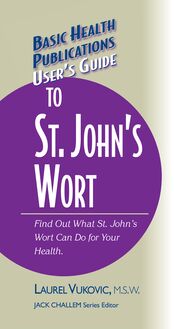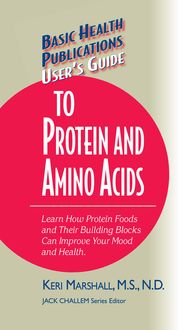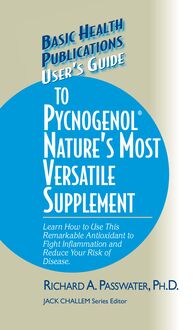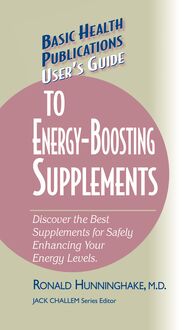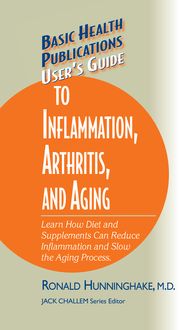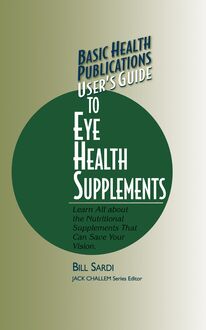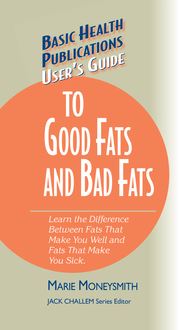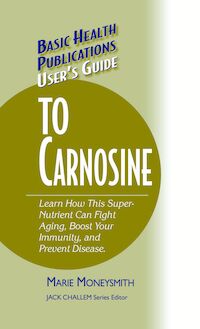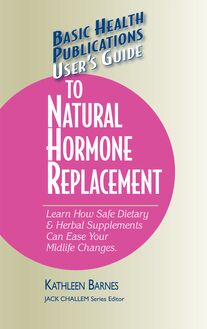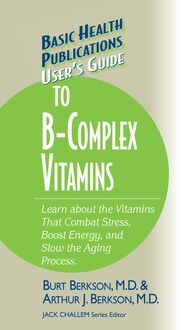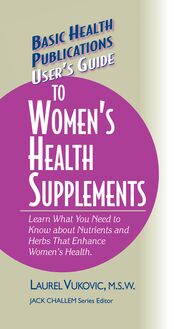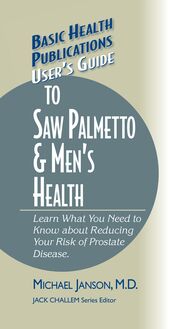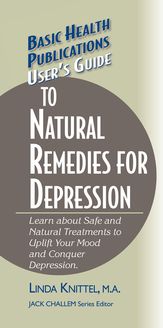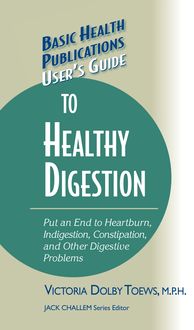User's Guide to Weight-Loss Supplements , livre ebook
50
pages
English
Ebooks
2003
Vous pourrez modifier la taille du texte de cet ouvrage
Obtenez un accès à la bibliothèque pour le consulter en ligne En savoir plus
Découvre YouScribe en t'inscrivant gratuitement
Découvre YouScribe en t'inscrivant gratuitement
50
pages
English
Ebooks
2003
Vous pourrez modifier la taille du texte de cet ouvrage
Obtenez un accès à la bibliothèque pour le consulter en ligne En savoir plus
Publié par
Date de parution
01 janvier 2003
Nombre de lectures
0
EAN13
9781591206651
Langue
English
Poids de l'ouvrage
1 Mo
Publié par
Date de parution
01 janvier 2003
Nombre de lectures
0
EAN13
9781591206651
Langue
English
Poids de l'ouvrage
1 Mo
The information contained in this book is based upon the research and personal and professional experiences of the author. It is not intended as a substitute for consulting with your physician or other healthcare provider. Any attempt to diagnose and treat an illness should be done under the direction of a healthcare professional.
The publisher does not advocate the use of any particular healthcare protocol but believes the information in this book should be available to the public. The publisher and author are not responsible for any adverse effects or consequences resulting from the use of the suggestions, preparations, or procedures discussed in this book. Should the reader have any questions concerning the appropriateness of any procedures or preparations mentioned, the author and the publisher strongly suggest consulting a professional healthcare advisor.
Series Editor: Jack Challem Editor: Carol Rosenberg Typesetter: Gary A. Rosenberg Series Cover Designer: Mike Stromberg
Basic Health Publications User’s Guides are published by Basic Health Publications, Inc.
8200 Boulevard East North Bergen, NJ 07047 1-800-575-8890
Copyright © 2003 by Dallas Clouatre, Ph.D.
ISBN 13: 978-1-59120-665-1
ISBN: 1-59120-092-X
All rights reserved. No part of this publication may be reproduced, stored in a retrieval system, or transmitted, in any form or by any means, electronic, mechanical, photocopying, recording, or otherwise, without the prior written consent of the copyright owner.
Printed in the United States of America
10 9 8 7 6 5 4 3 2 1
C ONTENTS
Introduction
1. The Risks of Excess Weight
2. Why People Gain
3. Finding the Weight That’s Right for You
4. About Those Diets . . .
5. What to Expect from Diet Supplements
6. Conquering Syndrome X
7. Sometimes Eating Fat Makes You Lean
8. Reducing Stress in the Battle of the Bulge
9. Getting Rid of Toxins
10. Appetite Control 101
11. Blocking Fat and Carb Calories
12. Enhancing Thermogenesis and the Thyroid
13. Fiber Fitness
14. Evaluating Claims and Products
Conclusion: Individualizing Your Program
Selected References
Other Books and Resources
I NTRODUCTION
W ant to add three, seven, or even more years to your life? Want to reduce your insurance and medical bills? Want to add more spring to your step—and maybe to a few other areas, as well? How about improving your chances at getting a new job or that promotion you’ve applied for? For six out of ten Americans, there is a simple answer. Just lose weight.
Unfortunately, actually getting rid of the excess pounds and keeping them off for most dieters isn’t quite so simple. Not that there aren’t lots of products out there that claim to be magic bullets. You see the ads everywhere. “Promotes Weight Loss.” “In credible Energy. Rapid Weight Loss.” “Weight-Loss Breakthrough of the Decade!” “Fat-Blocker!” “Thermogenic Wonder!” There are so many competing approaches that no one other than an expert can pick his or her way through the chaos. What the average dieter needs is a guide to why body weight matters, what causes weight gain, and the options available for getting leaner and improving health.
The first reaction of some readers to dieting issues will be skepticism: “Is there even a need for diets and diet products? The answer is to eat less, right?” They would not be alone. Until about a decade ago, cutting food intake was considered to be the principal method for losing weight. At universities and nutritional research centers around the world, this view is changing. A recent study at the National Institutes of Health suggests that there is no evidence that caloric restriction is a good long-term strategy for weight loss. In fact, for some people, cutting back on calories will lead to health risks.
Certainly, those who significantly overeat can benefit from reducing their caloric intake. In general, however, calorie counting is not the solution to weight problems. Many reduced calorie diets are initially effective for achieving rapid weight loss, but the weight is quickly regained once the diet is over because the pounds lost consisted primarily of water and lean muscle tissue. The result of the typical diet is that the percentage of the body’s tissues made up of fat usually is increased and the percentage made up of lean tissues—the tissues that burn calories—is decreased! The energy balances in the body are upset and future diets become more difficult because the body no longer responds. This is why the typical diet leads to the “yo-yo” pattern of weight loss/weight gain, with each cycle of weight gain more extreme than the previous one.
A weight-loss program should not just take off unwanted pounds. It should help you to feel good and look good. And the results should last! The goal is to make changes in body composition and metabolism that increase the body’s ability to burn calories. Modifying the foods you eat and the supplements you take can make all the difference as to whether you achieve your weight-loss goals.
Guiding you toward the diets, habits, and supplements that are right for you as an individual is the purpose of this book. This User’s Guide to Weight-Loss Supplements is designed to remove the confusion that so often arises from the babble of claims found in the marketplace. It will lead you step-by-step through the issues and the available solutions related to losing weight.
Chapters 1 through 5 tell you what the risks are in gaining excess pounds, why it happens, and how you can determine the weight that is realistically achievable for you. Although you may find that you must swear off the “ten pounds in ten days” programs, you will be pleasantly surprised to learn that some plans really do work. Chapters 6 through 9 give enough basic information on the ways our bodies work to allow you to understand the choices you need to make to win the “battle of the bulge.” Finally, Chapters 10 through 14 give the skinny on the supplements.
CHAPTER 1
T HE R ISKS OF E XCESS W EIGHT
A ccording to a 2003 editorial in the Journal of the American Medical Association, obesity has become pandemic in the United States. Today, two in three adults are classified as being either overweight or obese compared with fewer than one in four adults in the early 1960s. An astounding 61 percent of adult Americans are estimated to be either overweight or obese. This means that well over 100 million people in this country have crossed the threshold of increased risks for various health conditions.
Carrying excess weight is considered to be the second leading cause of preventable death in the United States. It increases the risks for all of the following: hypertension dyslipidemia (elevated cholesterol and triglycerides) diabetes type 2 coronary heart disease stroke gallbladder disease osteoarthritis sleep apnea and respiratory problems endometrial, breast, prostate, and colon cancers
Believe it or not, this list still leaves out many conditions for which excess weight in creases the risks. Merely being overweight by age forty cuts three years off of one’s life; being obese cuts between 5.8 and 7.1 years from life expectancy.
Ideal Weight The weight range, depending on height and frame size, at which basic health is best and the risks of disease and death are lowest.
Defining Obesity
At one time, obesity was defined as being roughly twenty pounds over one’s desirable weight. This older definition obviously does not take into account how tall one is, the heaviness of the bones, and so forth. Therefore, the medical world adopted another definition based on the body-mass index (BMI), which is a measure of your height/weight ratio. Using this definition, some one is overweight if he has a BMI of 25 to 29.9. He is obese if his BMI is more than 30. There is a special category for individuals who are morbidly obese (BMI of 40 or more), which is to say, individuals who generally are at least one hundred pounds over their ideal weights. Determining your own BMI is not difficult if you have a calculator or computer handy.
WEIGHT RISK LEVELS Low Risk (Normal Weight) BMI = 20–24.9 Moderate Risk (Overweight) BMI = 25–29.9 High Risk (Clinical Obesity) BMI = 30–39.9 Highest Risk (Morbid Obesity) BMI = over 40 -->
Calculating Your BMI
The hardest part of determining your BMI if you are not used to the metric system is keeping straight the fact that the measurements are not in pounds and inches. One kilogram is equal to 2.2 pounds. One meter is equal to 39.4 inches. One inch is equal to 0.0254 meters. A common weight is 70 kg, which is 70 times 2.2 = 154 pounds. If you weigh 154 pounds, then you would reverse the procedure and divide this by 2.2 to get 70 kg. Similarly, for height, if you are 5 foot 10 inches, convert this first to inches (70 inches) and then multiply by 0.0254 to get 1.8 meters.
Now you are ready to figure your BMI. The BMI is calculated by taking your weight in kilograms and dividing it by the square of your height in meters. Using the weight and height above, this means that a person weighing 154 pounds and standing 5 foot 10 inches tall would first convert to the metric measures of 70 kg and 1.8 meters. In this case, 70 divided by 3.24 (1.8 x 1.8) to give a BMI of 21.6. Someone 5 feet 4 inches tall and weighing 150 pounds has a BMI of 25.7.
Is Weight a Matter of Culture?
There is an old maxim, “you can never be too thin nor too rich.” For the most part, it does seem to be true that those groups that are better off financially also tend to be less likely to carry excess pounds. The obverse of this is the fact that until recent decades, obesity tended to be thought of as a condition that afflicts primarily minorities. Of course, there have always been important exceptions. Among Mexican-Americans, for example, the rate of obesity in boys rises with family income. Similarly, in parts of the Midwest, laying out a good table—and enjoying it—remains the tradition.
